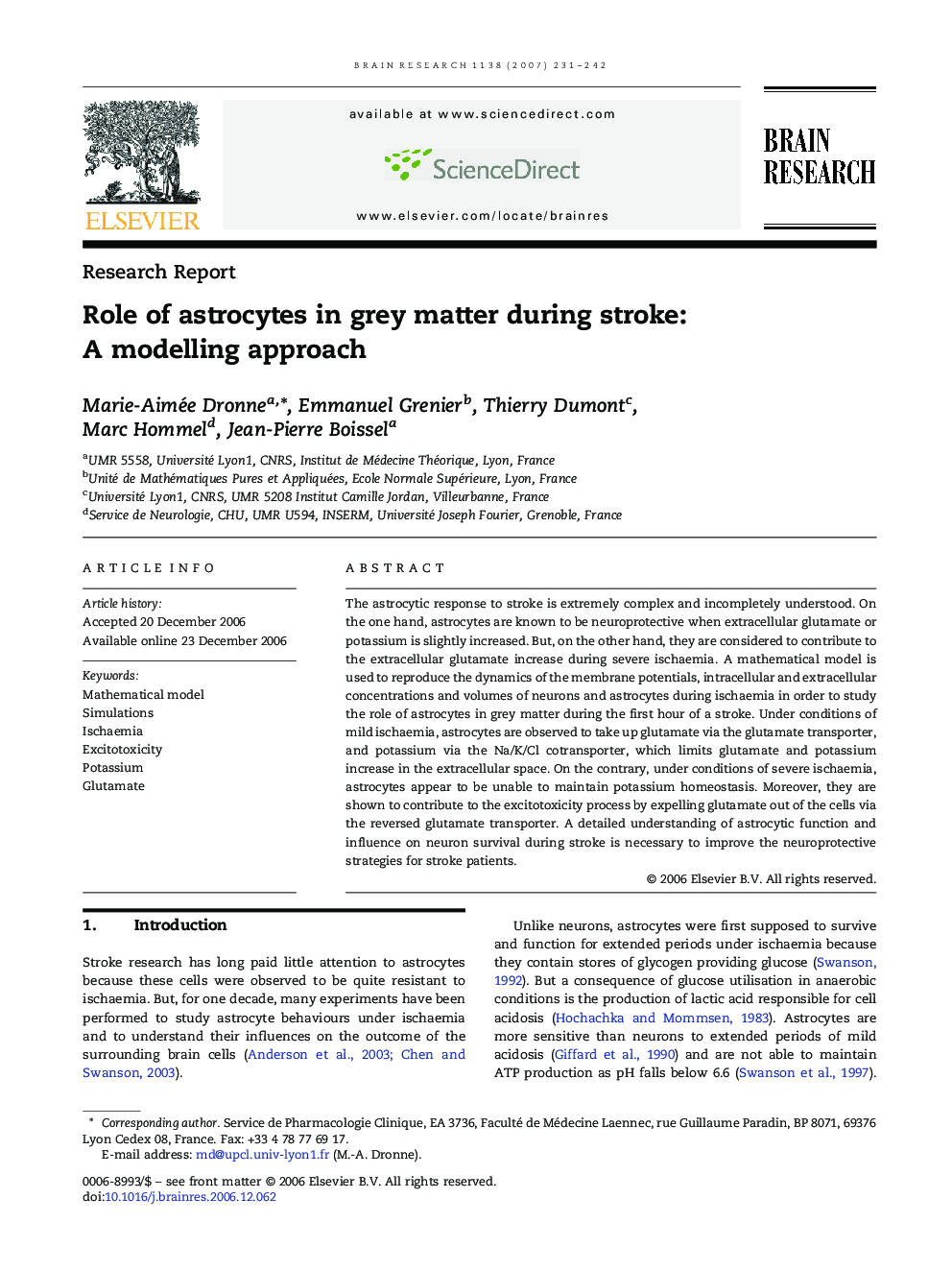| Article ID | Journal | Published Year | Pages | File Type |
|---|---|---|---|---|
| 4331461 | Brain Research | 2007 | 12 Pages |
The astrocytic response to stroke is extremely complex and incompletely understood. On the one hand, astrocytes are known to be neuroprotective when extracellular glutamate or potassium is slightly increased. But, on the other hand, they are considered to contribute to the extracellular glutamate increase during severe ischaemia. A mathematical model is used to reproduce the dynamics of the membrane potentials, intracellular and extracellular concentrations and volumes of neurons and astrocytes during ischaemia in order to study the role of astrocytes in grey matter during the first hour of a stroke. Under conditions of mild ischaemia, astrocytes are observed to take up glutamate via the glutamate transporter, and potassium via the Na/K/Cl cotransporter, which limits glutamate and potassium increase in the extracellular space. On the contrary, under conditions of severe ischaemia, astrocytes appear to be unable to maintain potassium homeostasis. Moreover, they are shown to contribute to the excitotoxicity process by expelling glutamate out of the cells via the reversed glutamate transporter. A detailed understanding of astrocytic function and influence on neuron survival during stroke is necessary to improve the neuroprotective strategies for stroke patients.
